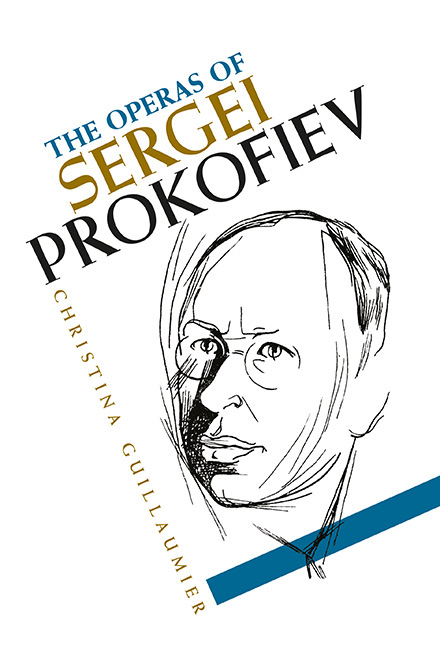Book contents
- Frontmatter
- Dedication
- Contents
- List of Illustrations
- Acknowledgements
- Note on transliteration, abbreviations and sources
- Introduction: Prokofiev and Opera
- 1 Early Operatic Experiments and Maddalena
- 2 Between Opera and Theatre: Radicalisation of Style in The Gambler
- 3 A Successful Enterprise: Love for Three Oranges
- 4 The Devil Within: Theatre and Spectacle in The Fiery Angel
- 5 Towards a Soviet Operatic Style: Semyon Kotko
- 6 Betrothal in a Monastery and the Retreat from Ideology
- 7 War and Peace: The Prokofievan Operatic Ideal?
- 8 Dramaturgical Re-evaluation in The Story of a Real Man
- Epilogue
- Synopses
- Bibliography
- Index
4 - The Devil Within: Theatre and Spectacle in The Fiery Angel
Published online by Cambridge University Press: 28 April 2020
- Frontmatter
- Dedication
- Contents
- List of Illustrations
- Acknowledgements
- Note on transliteration, abbreviations and sources
- Introduction: Prokofiev and Opera
- 1 Early Operatic Experiments and Maddalena
- 2 Between Opera and Theatre: Radicalisation of Style in The Gambler
- 3 A Successful Enterprise: Love for Three Oranges
- 4 The Devil Within: Theatre and Spectacle in The Fiery Angel
- 5 Towards a Soviet Operatic Style: Semyon Kotko
- 6 Betrothal in a Monastery and the Retreat from Ideology
- 7 War and Peace: The Prokofievan Operatic Ideal?
- 8 Dramaturgical Re-evaluation in The Story of a Real Man
- Epilogue
- Synopses
- Bibliography
- Index
Summary
From its first staging in Venice at the Teatro La Fenice, on 14 September 1955, Prokofiev’s The Fiery Angel perplexed audiences. It is a misunderstood work, not least because it is based on a symbolist narrative, features a demanding soprano part, and relies on an audience's ability to suspend disbelief to an almost impossible extent. Frolova- Walker notes that the opera was already ‘handicapped by its failure to engage with any contemporary artistic currents’. The opera is based on Valery Bryusov's novel The Fiery Angel. Prokofiev was not a composer who compromised on his operatic ideas, and despite not having secured a promise of performance he allowed his fascination with the theatrical potential of the text to take over his imagination.
Prokofiev worked on this opera over a span of ten years. But, unlike the clear-cut changes that he decided to make to The Gambler when he reviewed it, the revisions in this case, as we shall see, were far more laborious, at times uncertain, and often quite fundamental. Indeed, the revisions can tell us a great deal about Prokofiev's developing artistic vision. As he tried to regain control of the material he had amassed over such a long period, he was plagued by his own artistic insecurities as well as family pressures. The three versions of the work are quite different; in this chapter I will look at each version in some detail, not to conduct an archaeological survey or perform a reconstructive exercise, but to draw some conclusions about Prokofiev's evolving artistic vision over a ten-year span. Between 1920 and 1930, The Fiery Angel was consistently in his thoughts; for this reason alone, the revisions deserve some consideration. A brief outline of the key changes in each of the three versions will be provided as context. The second version is the one performed today and the one on which this musical analysis is based.
Bryusov wrote his novel The Fiery Angel hurriedly between 1907 and 1908 for inclusion in monthly instalments in The Scales, a periodical for new literature established in 1903. It is written in the first person (like The Gambler). The work was a roman-à-clef and, as Taruskin notes, ‘the main events of the novel parallel the real-life drama’ between Nina Petrovskaya, Valery Bryusov, and Andrey Bely.
- Type
- Chapter
- Information
- The Operas of Sergei Prokofiev , pp. 79 - 118Publisher: Boydell & BrewerPrint publication year: 2020



